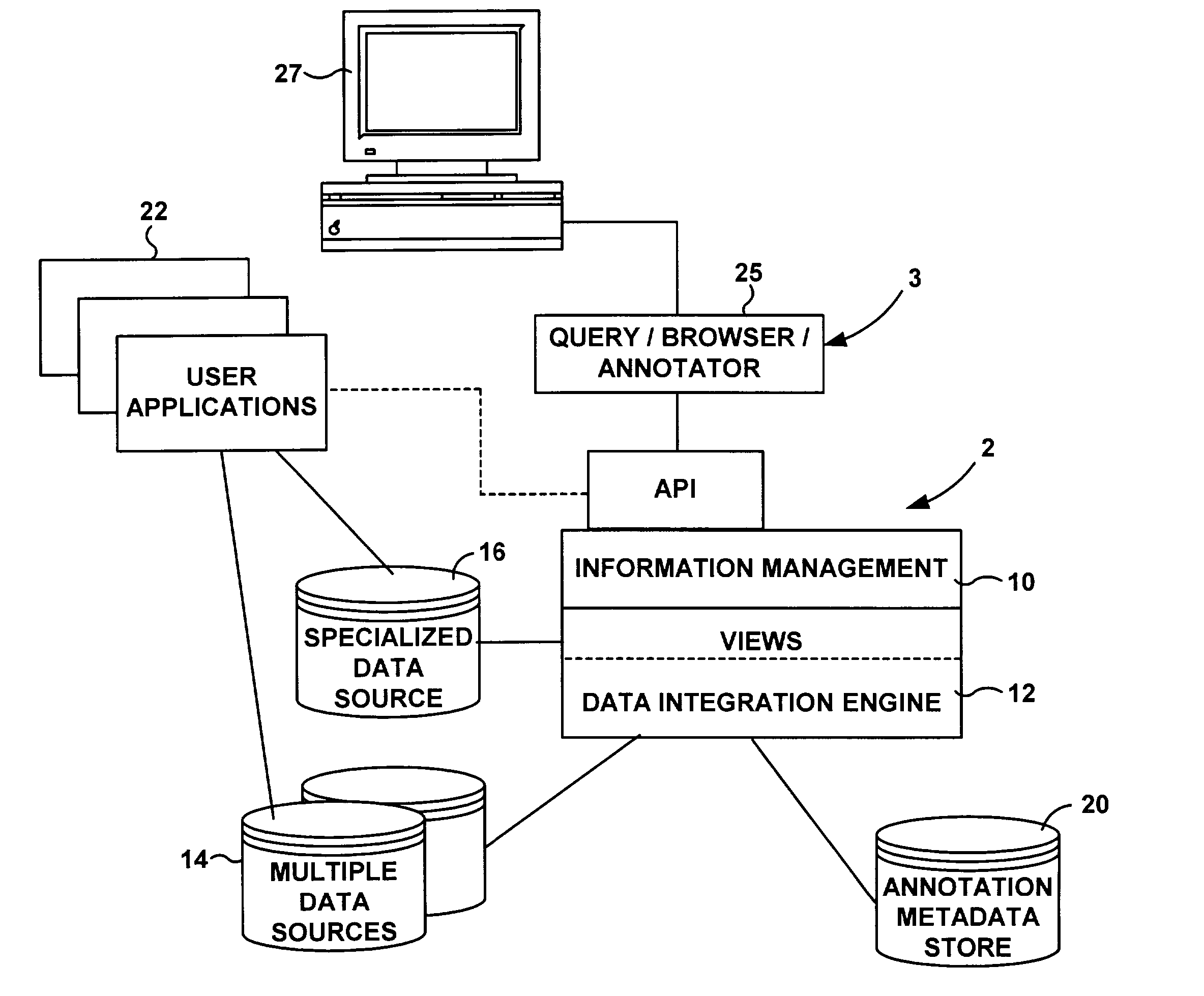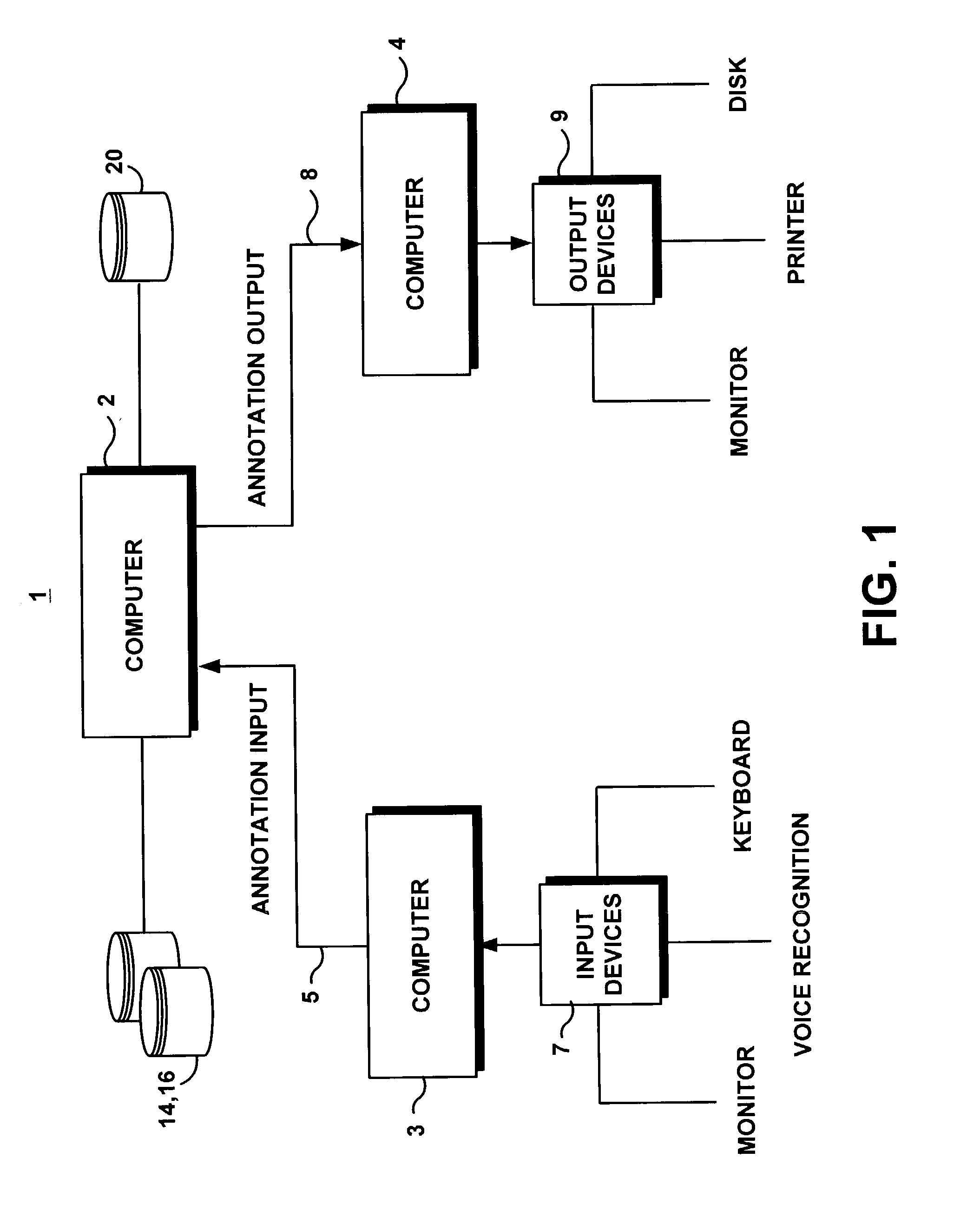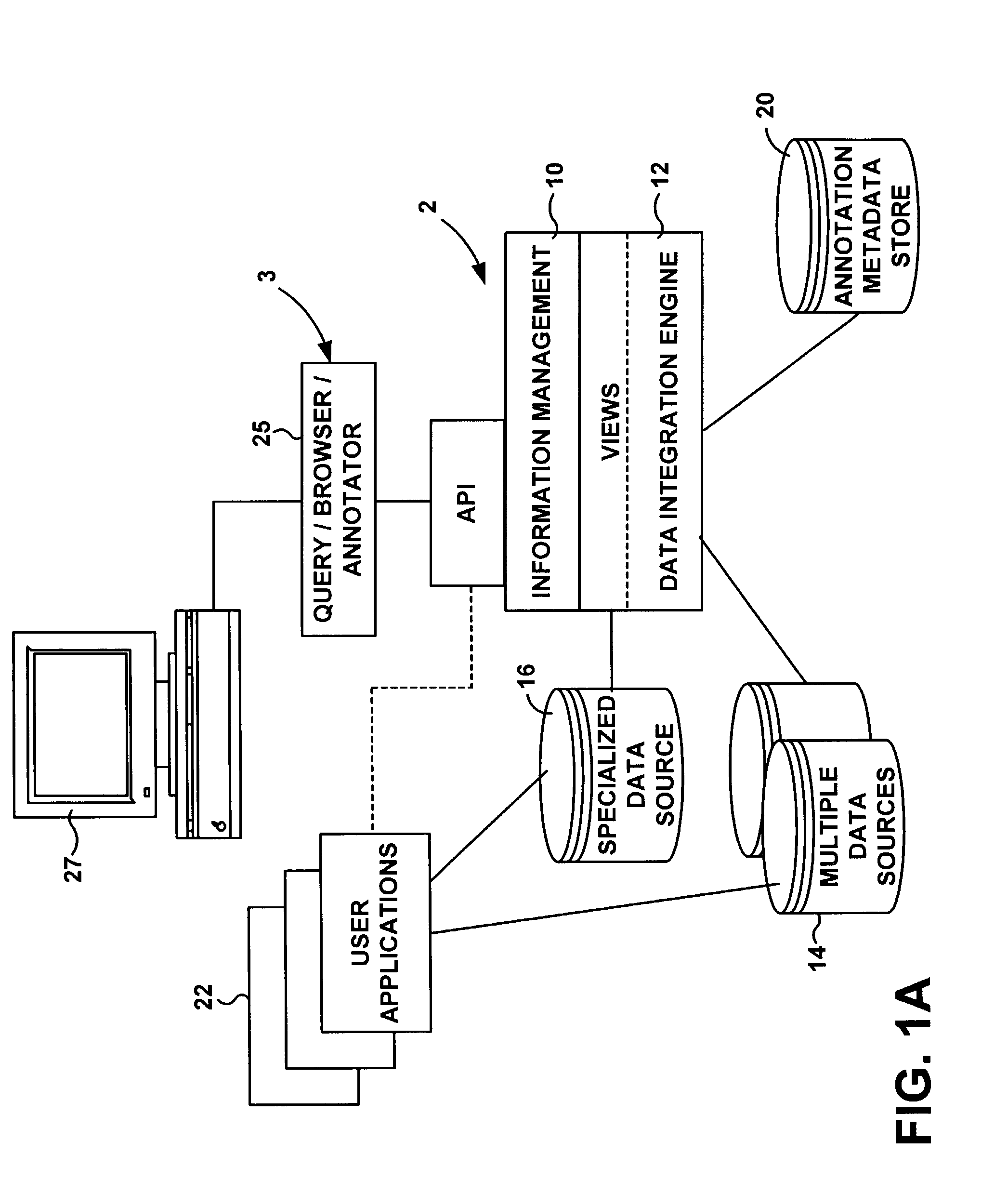System for organizing an annotation structure and for querying data and annotations
a technology of annotation structure and system, applied in the field of data entry and retrieval, can solve the problem of more data with little useful content, and achieve the effect of enforcing structure and consistency, enhancing queryability and semantic interpretation, and little useful conten
- Summary
- Abstract
- Description
- Claims
- Application Information
AI Technical Summary
Benefits of technology
Problems solved by technology
Method used
Image
Examples
Embodiment Construction
[0049]FIG. 1 illustrates a system 1 that might be utilized to practice the teachings of the present invention. The system 1 includes a plurality of computers or processors 2, 3, 4. While for purposes of illustration the computers 2, 3, 4 are described as possessing specialized functions, it should be clear that any one, or a combination of the computers 2, 3, 4 can be used to generate the annotations, and to search the data and annotations sources (e.g. databases) as described herein.
[0050]As further illustrated in FIG. 1A, computer 2 hosts an information management system 10 of the present invention, and includes, or is connected to one or multiple databases 14, 16 to be searched. Computer 2 is interconnected to computer 3 via an annotation input link 5 for allowing annotations to be inputted from computer 3 to computer 2. The annotation input can be from a user of, for example, a graphical user interface (GUI) application, or from a software application, running for example on com...
PUM
 Login to View More
Login to View More Abstract
Description
Claims
Application Information
 Login to View More
Login to View More - R&D
- Intellectual Property
- Life Sciences
- Materials
- Tech Scout
- Unparalleled Data Quality
- Higher Quality Content
- 60% Fewer Hallucinations
Browse by: Latest US Patents, China's latest patents, Technical Efficacy Thesaurus, Application Domain, Technology Topic, Popular Technical Reports.
© 2025 PatSnap. All rights reserved.Legal|Privacy policy|Modern Slavery Act Transparency Statement|Sitemap|About US| Contact US: help@patsnap.com



